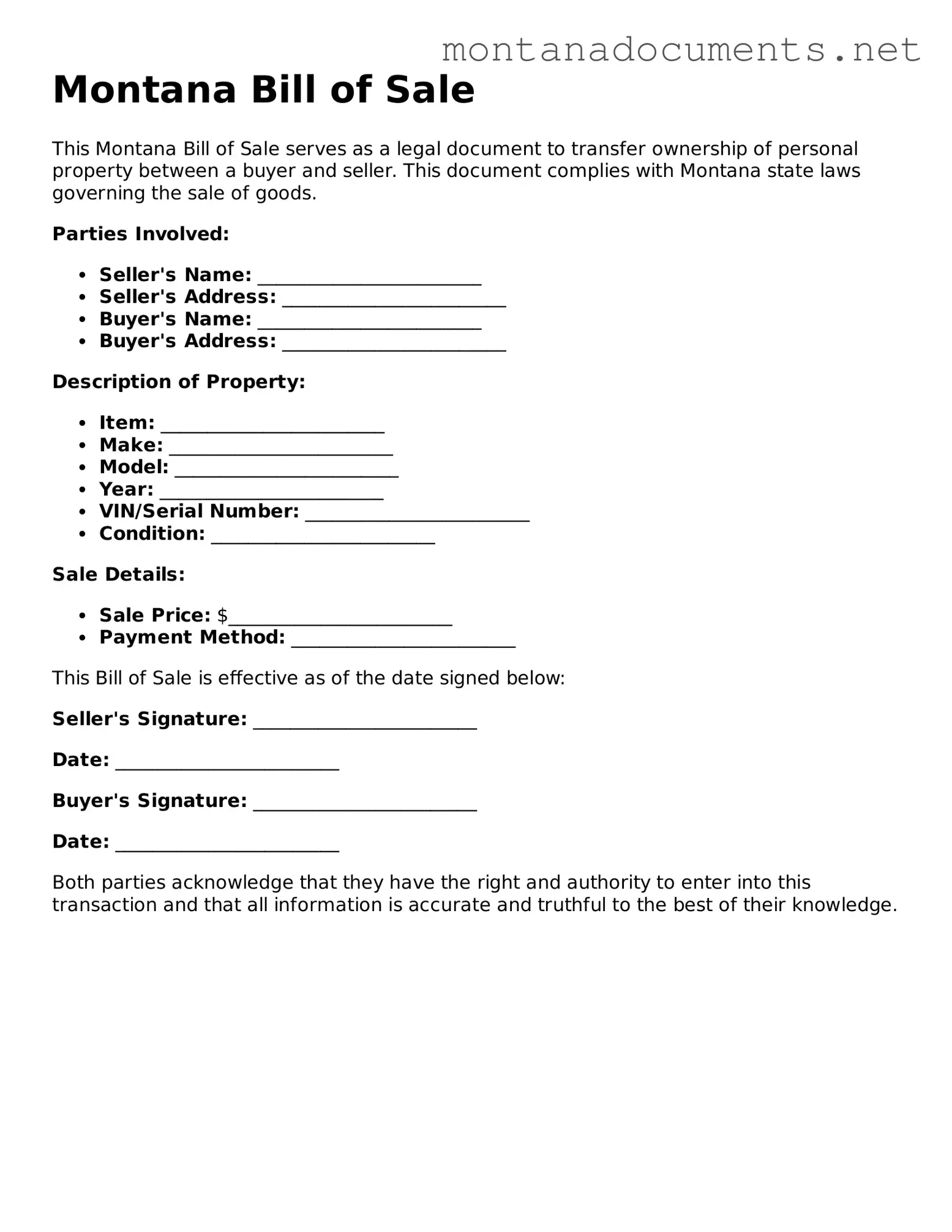The Montana Bill of Sale form is quite similar to a Vehicle Bill of Sale. This document is specifically used when transferring ownership of a vehicle from one party to another. Like the general Bill of Sale, it includes details about the buyer, seller, and the vehicle itself, such as the make, model, year, and Vehicle Identification Number (VIN). Both documents serve as proof of the transaction and help protect the interests of both parties involved.
Another document closely related to the Montana Bill of Sale is the Boat Bill of Sale. This form is used when buying or selling a boat. It includes similar elements, such as the buyer and seller's information and details about the boat, including its make, model, and hull identification number. Just like the Montana Bill of Sale, it provides legal proof of ownership transfer and helps ensure a smooth transaction.
The Equipment Bill of Sale is also comparable. This document is used for the sale of equipment, such as machinery or tools. It contains information about the buyer, seller, and the equipment being sold. Both the Equipment Bill of Sale and the Montana Bill of Sale serve the same purpose: to document the sale and protect both parties by providing a record of the transaction.
A Livestock Bill of Sale is another similar document. This form is utilized when buying or selling livestock, such as cattle or horses. It includes pertinent details about the animals, including their identification and health information. Like the Montana Bill of Sale, it acts as a legal record of the transaction, ensuring that both the buyer and seller are protected.
The Personal Property Bill of Sale is akin to the Montana Bill of Sale as well. This document is used for the sale of personal items, such as furniture or electronics. It outlines the details of the transaction and includes information about the buyer and seller. Both documents provide proof of ownership transfer, which is essential for protecting the rights of both parties.
A Gun Bill of Sale is another document that shares similarities. This form is specifically for the sale of firearms. It includes information about the buyer, seller, and the firearm itself, such as make, model, and serial number. Just like the Montana Bill of Sale, it serves as a legal record of the transaction, ensuring compliance with laws governing firearm sales.
The Mobile Home Bill of Sale is also comparable to the Montana Bill of Sale. This document is used when transferring ownership of a mobile home. It includes details about the buyer, seller, and the mobile home, such as its make, model, and identification number. Both documents provide legal proof of the sale, which is crucial for both parties involved.
When engaging in any form of sale, utilizing a General Bill of Sale form can be invaluable, as it provides a clear record of the transaction, ensuring that both the buyer and seller have legal protection. For those looking for templates or more information on this type of document, TopTemplates.info offers a variety of resources that can assist in creating the necessary paperwork for your transactions.
The Business Bill of Sale is another related document. This form is used when selling a business or its assets. It includes details about the buyer, seller, and the specific assets being sold. Like the Montana Bill of Sale, it serves as a legal record of the transaction, ensuring that both parties have a clear understanding of what is being transferred.
Finally, the Real Estate Bill of Sale is similar in nature. This document is used when selling personal property that is included in a real estate transaction, such as appliances or fixtures. It details the items being sold and includes information about the buyer and seller. Both the Real Estate Bill of Sale and the Montana Bill of Sale provide necessary documentation for ownership transfer, protecting the interests of both parties.
